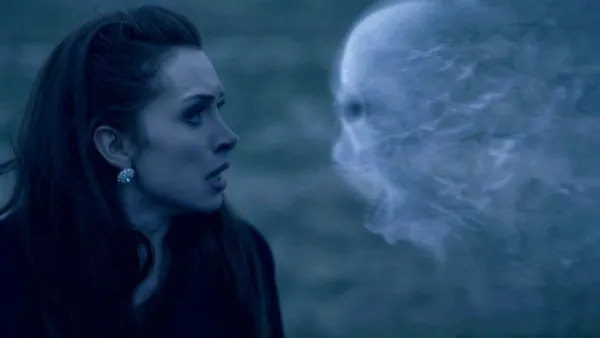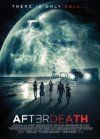Eye For Film >> Movies >> Afterdeath (2015) Film Review

Robyn (Miranda Raison) is having a bad day. She's cold, she's wet and she's just plain scared after finding herself washed up, Riverworld-style, on an empty beach. Nearby is a curiously familiar house. Having few other options, she goes to explore it. Inside, three people are having sex and a fourth is slitting her wrists in the toilet - but no blood is coming out.
It doesn't take long for these five young people, who until recently were all at the same nightclub, to realise that they're probably dead. With the mandatory Sartre quote got out of the way early on (pertinent as it is in this case), they start exploring the boundaries of their universe and trying to figure out why they're there. Also on the agenda is trying to find a means of escaping the lighthouse beam that flashes through the place at intervals, causing excruciating pain; and identifying the strange black smoky thing that keeps rushing across the ceiling and attacking individuals.

If the theories posited by the film are to be taken seriously, any number of brilliant thinkers must have been through this place in the past, so it's difficult to see why we should expect anything special of these kids, who would struggle to graduate from The Breakfast Club and whose plan for identifying their various sins is to play a drunken game of Truth Or Dare. Nevertheless, their early behaviour is realistic in as far as it goes, and it's refreshing to see a group of young women with a token horribly stereotypical guy instead of the other way round. It's also nice to see more realistic responses to Robyn's assumption of leadership than is often the case in these things. Elarica Gallacher's sniping may be intensely irritating but she manages to win some sympathy for her character later on, which is not bad going.
In keeping with the purgatorial character of the setting, everything is shot in a muted palette with a bluish tone which makes it look a bit like a car advert. It's effective for setting the scene but the film might have worked better had it been disposed of shortly afterwards. The murky visuals create an atmosphere that too quickly becomes depressing rather than scary - that might be the mood of some of the characters but it's not a smart thing to do to the audience. It's also problematic when the film tries to shift tone towards the end, because the actors aren't really strong enough to carry this by themselves and the script's attempts at sophisticated theological reasoning will fall flat for anybody with a rudimentary education.
What is impressive in this film is Doug Johnson's sound design, with the audio taking the weight for significant portions of the film. It's really his work that gives character to the various supernatural beings we meet, and that provides the immediate sense of horror in the film, the existential horror never achieving the impact it strives for. Flawed as it is, Afterdeath deserves credit for trying to do something different and prompt a young audience to ponder some big questions. It effectively satirises some key slasher film tropes (though it's difficult to tell if this is intentional or not) and its central point, though crude, will no doubt strike a chord with some.
Reviewed on: 18 Oct 2015
















